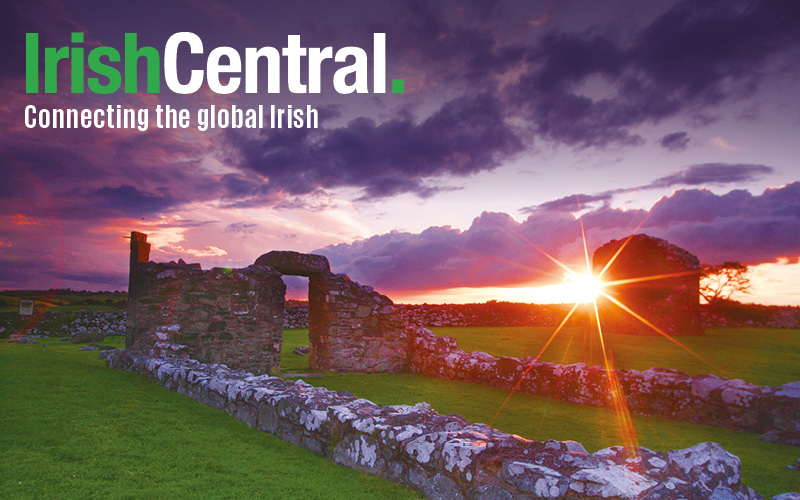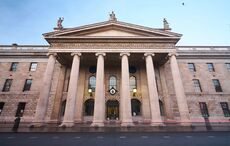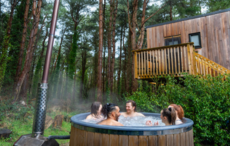I visited Belfast recently for the first time. The center of the city is a network of smart streets and office buildings around Belfast City Hall. This is an impressive baroque construction that was built when Queen Victoria of England awarded Belfast city status in 1888. At the time Belfast was, albeit briefly, more prosperous and populous than Dublin. City Hall then became another shrine of Unionist domination and privilege for over a century.
But the demographics of the city changed over the years and after the local elections of 2011 the new nationalist majority city council took control. In December, 2013 the council voted to limit the days when the Union Jack could be flown above its gilded towers and this decision sparked months of protest, some violent, by loyalists and unionists. They did not care how much disruption their riots caused to the commercial life of the city in the run up to Christmas. Inevitably given the sectarian history of Northern Ireland that thuggery was to be expected.
Nowadays the center and the surrounding upmarket shopping malls seemed to me to be calm and normal if one excluded the presence of Southerners like myself on shopping expeditions taking advantage of the hugely favorable post-Brexit referendum exchange rate with the euro.
I was almost trampled down in the street by a crowd of excited Dubliners with arms full of pre-Christmas gadgets and decorations. The city center too seemed awash with Republic registered vehicles with number plates inscribed with Gaelic names such as Baile Atha Cliath. It made for a curious juxtaposition alongside the massive statue in the City Hall grounds of a surly looking Queen Victoria.
I wandered through a department store in Belfast, unnoticed, as I thought, until I spied from the corner of my eye a figure fast approaching me from the side. We would have been on a collision course, so I changed direction. But still the figure followed me. ‘What had I done?’ I asked myself. Then a commanding female voice rang out loudly ‘Excuse me Sir’ I turned to my pursuer and saw it was the proverbial little old lady. ‘Do you have a 20 percent off voucher?‘ she asked loudly ‘No? Well here is one that I have to spare. You can have it. Enjoy your shopping,' she said with a smile and turned around.
I was a bit surprised by the initial openness of the people. Being from the south, I had inbuilt views of society in the six counties. I had been exposed most of my adult life to television pictures and stories of confrontation and sectarian strife in the North. I still half expected to see British army patrols and security checks on the streets. In fact, I do not remember seeing any policeman on the ground at all during my four day visit.
To be honest, I was still only half interested in the political situation there. I had half expected some open prejudice when I opened my Southern mouth but it was hard to detect and even now I cannot be sure if the (very) occasional impoliteness I endured was due to my being from the Republic or it was just the usual apathy against tourists and strangers.
"The peace agreement is eighteen years old now and we are never going back to the old days," declared the announcer on our city bus tour. I thought at first that this was a very optimistic statement although I realized that a whole generation in Ireland is reaching adulthood now with no first-hand knowledge of The Troubles. They may see Northern Ireland differently as they had never seen the convulsions of one horror after another that cast a shadow on the whole of Ireland for so long. The list of horrors then seemed despairingly endless: Bloody Sunday, hunger strikes, internment without trial, the Dublin and Monaghan bombings, Birmingham and Guilford- it went on and on.
I suppose if those new young Northerners listen to people talk about those cataclysmic events, they must feel like we ourselves did when we hear people talk about something in the past, before we were born, like old soldiers talking about the World War.
The bus tour did a cursory diversion around some of these troubled areas of Belfast, Falls Road, Shankill Road, the murals, the Peace Walls, etc. A bonanza has grown up around ‘Troubles’ tourism. For the sum of 30 pounds or so, one can have a customized tour in a black London- style cab with commentary from an ex political prisoner of your preferred persuasion.
These tours are less educational or informative than an opportunity for gawking at the remnants of other peoples misfortune. Like being a puerile intruder into a dysfunctional family, these sights are no famed battleground sites or heroic war memorials. Rather they traverse an awful vista of atrocities or outrages. Here is the place where the Shankill butchers tortured and murdered random Catholics, this is the church where bags of urine were hurled at young schoolgirls, this is the spot where an IRA bomb exploded in a chip shop killing nine people.
And it is a living landscape of conflict that is on view despite all the positive commentaries and optimism from the tour announcer.
There is a sobering realization of continuing sectarian conflict when one sees a so called ‘peace’ wall and the gate between the different communities in West Belfast which still has to be locked at night to keep the bigots apart.
Most striking too is the similarity of deprivation. The Falls Road with its thriving Gaeltacht looks as run down and depressed as the adjacent British empire sanctuary of the Shankill Road. If it were not for the flags and murals one could easily assume that these were working class communities united in a struggle against an oppressive ruling class.
The signs of sectarian division disappear rapidly when one ventures outside these isolated troubled areas and leave behind the grim Belfast skyline dominated by the by the Harland & Wolff shipbuilding company's famous twin gantry cranes, Samson and Goliath, which is still today a symbol of loyalist discrimination against Catholics.
Then we traverse middle class non-sectarian suburbs like the Malone Road area which could easily rival the leafy Dublin suburb of Ballsbridge for middle class tranquility and insouciant opulence.
And nothing seemed more remote from the grim back streets of West Belfast than the grandiose and colossal parliament building at Stormont with its pompously dramatic statue of the Lord Edward Carson, the chief architect and creator of the state of Northern Ireland and a hero to Ulster Unionists.
But we return inevitably to those these little tribal enclaves which testify to the divided nature of that society that Carson helped to create. The streets around Windsor Park, for instance, where the the Northern Ireland main football stadium is located, were festooned with Union Jacks and British iconography that would make a southern Irish person feel more unwelcome and alienated that anywhere on the island of Britain. Seeing that display of tribalism helps one understand the preference of some Nationalist minded professional footballers from Northern Ireland to forego running that gauntlet at every home match and choose to play for the Republic team instead.
Outside Belfast we toured North Antrim through a wonderful pristine sweep of coastline that stretched from the splendid beach at Portrush, past the medieval Dunluce castle, through the Giants Causeway and down to the outskirts of Belfast.
There are breathtaking views over to the coast of Donegal, which has a more northerly point than the (therefore inaccurately named) Northern Ireland, and across the Irish sea to the isles of Scotland. Rare sea birds flitted across the rocks over a misty pale blue sea lapping the shore in this area of outstanding beauty. One could almost imagine the ghost of Bonnie Prince Charlie appearing out of the mist, so spell-binding is the view.
And so to the Giant's Causeway. We mingled with the hundreds of tourists, for even in winter this is a tourist haven and is considered to be probably Northern Ireland's top tourist attraction. Here the authorities and controllers of the visitors center have no hesitation in calling on the ancient Celtic Irish myth of Finn McCool to embellish the mystery of the causeway.
According to this fantastic tale, Finn was having trouble with someone across the water (nothing new there!). A Scottish giant was threatening Ireland and Finn in anger grabbed chunks of the Antrim coast and threw them into the sea. The rock formed a path for Finn to follow and teach the Scot a lesson.
But wherever one turns in Northern Ireland, one cannot escape the signs of the political and religious division that definee Northern Ireland. Right next to the Giant's Causeway, the old Bushmills distillery is located in a village that was again smothered in a sea of Union Jacks and declarations of Britishness.
To an outsider these displays seem to betray a major insecurity by the local populace, like a wagon train circled to protect its prize possessions, its culture, and its privileges. Nowhere in Europe can match this schizophrenic division of society and I was minded of what I read about the ‘pieds noirs’ of Algeria when that group tried in vain to deny the overwhelming logic of demographics and democratic change in the 1950s.
As a southern visitor I was constantly (and cordially) questioned by some of those I assumed to be of Unionist persuasion about the reasons for my visit to Northern Ireland. But I was never able to develop a conversation. "Those people will talk to you but they will not engage," said a friend of mine recently about their attitudes to Southerners.
It is like as if they mean to ensure that although they would welcome you to visit their little state they want to be sure you know the way to leave. And regardless of its outstanding attractions, at the end of my short visit I was glad I knew the way home too.




Comments